Franz Marc – Spirit Animals
by David Fox
Franz Marc was a German Expressionist, who created many artworks featuring nature and animals, and was a co-founder and an active member of the German art group, “Der Blaue Reiter”, or “The Blue Rider”.

Background
Franz Marc was born on 8th February. 1880 in Munich, Germany. Dubbed “The Little Philosopher” by his family, Franz was by nature shy and especially sensitive, like many artists.
His younger days were spent within the free spiritedness of a highly creative and liberal-minded family. His father was a landscape painter, and his mother was a homemaker and socially liberal Calvinist.
Despite his father being an artist himself, he didn’t suppose Franz would make a great artist, and so this dismissive air made Franz depressed, and yet he still entered the Munich Academy to learn art.
After a couple of years in the fine arts program, rather dejected by the academy’s limitations on artists like himself, Franz decided to travel to Paris, which was the art center of the world at that time.
He spent his days visiting local art museums, and had absorbed the nuances of classical painting partly by viewing their works, but also by copying the old masters he was surrounded by.
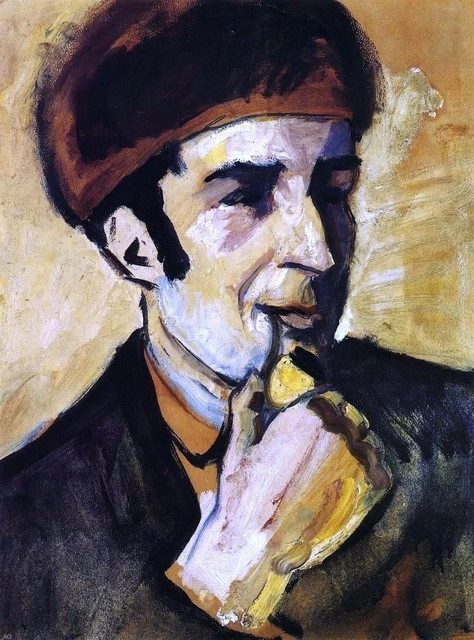
Influence of Paris
The influence of other artists had a very huge impact on Franz Marc. Encountering the artworks of both Gaugin and Van Gogh, Marc took their work to heart and realized that his love of nature might be a way to express himself artistically, as these two artists had done.
For example, speaking of influence, his work called “Cats on a Red Cloth”, which was created around 1909-1910, was strongly influenced by Van Gogh as you might notice. Still, the color scheme adheres to the tones of reality, seeing Marc not yet venturing off into the realms of experimentation he would soon explore.

With this painting in particular, vibrant brush strokes and vivid colors occupy the viewer’s eye and give a feeling of two cats enjoying a typical feline day in the life, very similar to the Van Gogh in its exploration of things you might see around you, but depicted differently than you’ve ever seen them before, with that slight jolt of experimental abstraction.
They say emulation is a form of flattery, but it takes a special artist to move beyond mere stylistic copying, which Franz certainly did before too long. This might be said to have been inevitable, as by now Marc had developed a very personal theory of symbolic color theory, which began to inform his work.
A couple of years later, Franz Marc met another famous painter, a well-known person in the art world – expressionist Wassily Kandinsky.
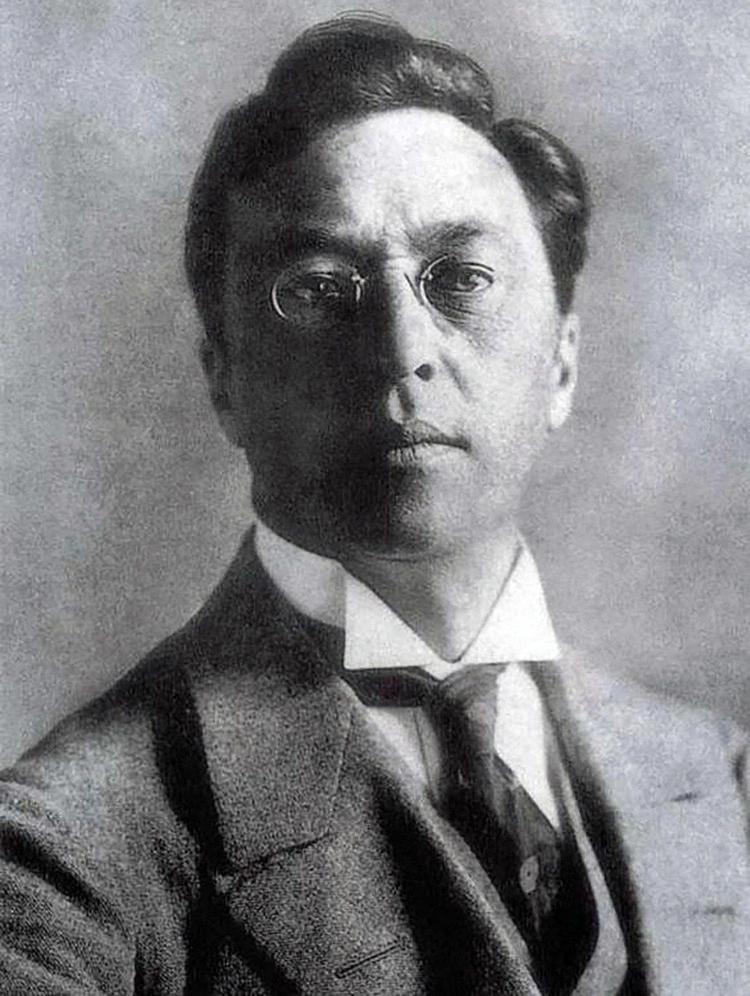
Their unity and friendship combined into an active working relationship with the artist group called “New Artist’s Association” and the creation of the “Der Blaue Reiter”, or “The Blue Rider”. The name was inspired by both artists’ affinity for blue color, with Kandinsky liking the idea of a horse rider, and Marc being partial to horses.
The Blue Rider was a way for artists to escape what more formal institutions of the time were doing which was to gravitate closer to colors and shapes which matched reality. Too many “should’s” for Marc. With the onset of photography, realism was becoming more and more inescapable in art and the idea of a prismatic love of all colors and shapes seemed to clash with harsh reality of the time, going into the first World War.
It was around this time that Franz Marc created one of his best known paintings, “The Blue Horse”, in 1911, which combined primary colors and a touch of cubism. It also symbolized Marc’s combining his love of nature, animals, personalized color theory, and abstraction into what would become his signature style of painting.
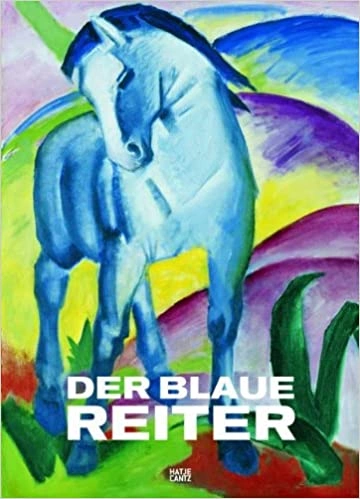
Love of Animals
Franz Marc had a special view on painting animals, mostly home animals as horses or dogs. One of his most known paintings is called “Dog Lying In The Snow”, based on his sheep dog, Russi.
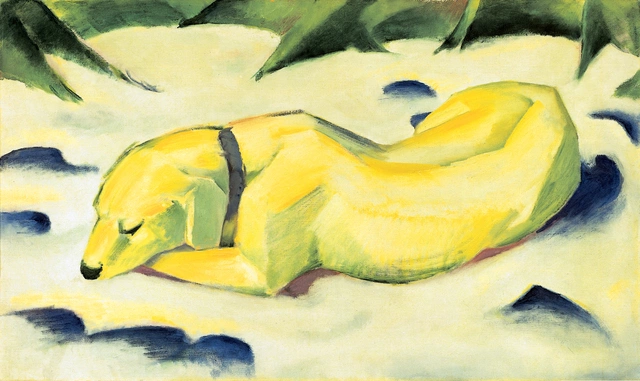
In the painting itself, a light yellow-colored dog is peacefully lying on the ground with his eyes closed – it gives a calm impression to viewers and looks rather unassuming at first glance
But. when you start to look more carefully, the shape of the dog gives a more vibrant image because the painter gave to this dog a few cubistic characteristics, which puts the dog in a timeless setting.
Furthermore, he used two primarily colors blue and yellow and the third – green – which you can get by mixing the two, creating a palette that is unique and unusual. According to Victoria Robson, who is a Curator European Art, both the composition and these colors symbolize the idea of a harmonious unity, whereby the animal, the colors, the lines, and the landscape all become one.
In fact, harmony of colors and a vision of animals being seen as the spiritual creatures they are became fundamental to all his work at this time. Second to his love of horses and his dog Russi, Marc loved to depict deer, which he looked after.
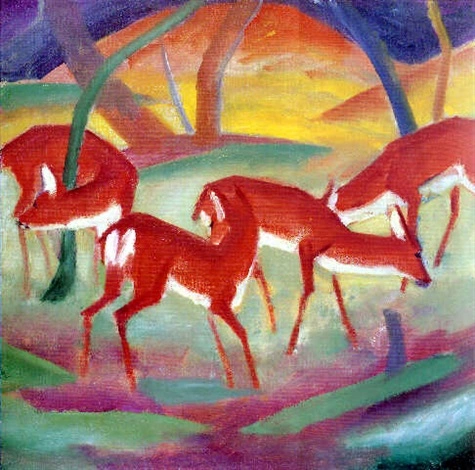
It has been said that Franz Marc considered animals to be more spiritual than humans. An interesting take, and surely many might agree with this, as humans are seen as deceitful and greedy, and animals are seen as innocent. Therefore, to align himself with the innocence of animals, Marc stopped painting anything but animals from 1911 onward.
There is one painting you may know called “Yellow Cow”, created in 1911. The title represents painting fairly accurately, as it it intrigues the viewer with a wide spectrum of vivid colors and bright emotions, portraying a cow as perhaps never before, galloping through a vividly but somewhat fantastically colored landscape.
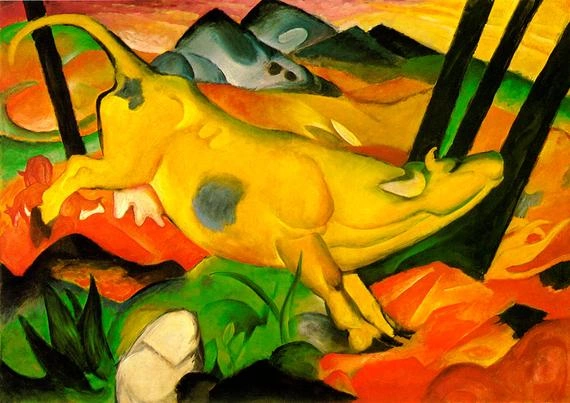
According to David Wistow, an Exhibition planner at the Art Gallery of Ontario, Franz Marc believed that yellow color represents feminine energy and blue the masculine, in accordance with his personal views on color theory.
It so happened that the artist was newly married around the time he created this painting, therefore art historians are guessing that this painting illustrates an unusual, but exciting perspective on married life, which combines the yellow of the feminine and the blue of the masculine.
Since Marc had decided to live in the Alps, he criticized everything that was related to city lifestyle: corruption, pollution, and materialism, he had chosen to show a side of nature in his work and connect himself to a spirituality which to him had far more meaning.

In 1915, in Marc’s letter to his wife, he wrote that his idea is to paint animals, not the way he sees them, but rather the way they really are and coexist with nature, or even to represent their place in the whole world.
By populating his artwork with various animals, he hoped somehow to connect his spirit to theirs, and theirs to ours. It’s a good theory, and who can say what mysteries lie within the brushstrokes of a painting, particular a Franz Marc painting.
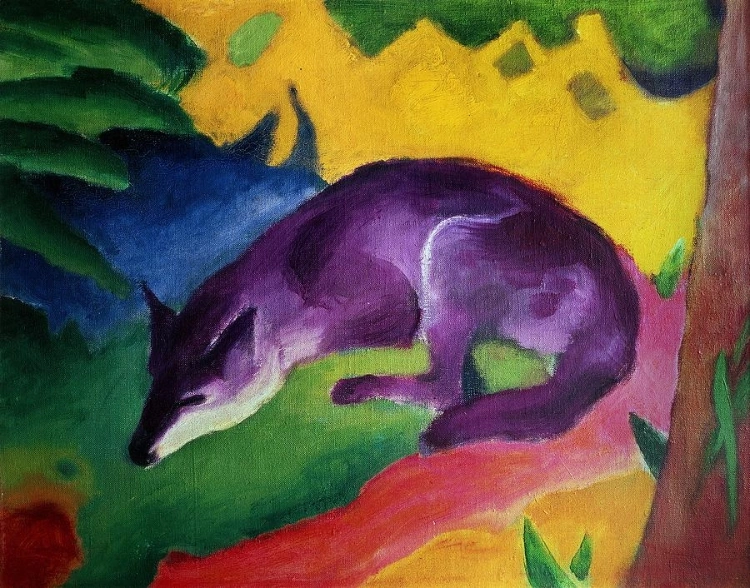
It is also known that when he was growing up, he liked to spend his free time walking with his dog. In his young days, he worked with horses and loved deer and he kept deer himself. Therefore, it’s not exaggerating to say that Franz Marc can be strongly considered as one of the best expressionists dealing with the theme of animals that ever lived, as he did his best to represent their souls in his works so that humanity could always remember that the planet is not solely about them.
Recommended Videos about Franz Marc

About David Fox
David Fox is an artist who created davidcharlesfox.com to talk about art and creativity. He loves to write, paint, and take pictures. David is also a big fan of spending time with his family and friends.
Leave a Reply
 |
 |
 |
 |
Just Art and Fun
Now get FREE Gifts. Or latest Free phones here.
Disable Ad block to reveal all the secrets. Once done, hit a button below
 |
 |
 |
 |